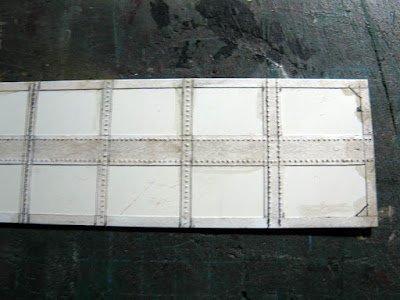As life goes on, you lose a few friends and make new ones. Sometimes for the better, sometimes for the worst.
Up until now, my single tool for measuring was my old trusty clear acrylic ruler. It was handy, but on many case, it was somewhat hard to determine exact dimensions due to parallax errors, geometry or simply because dark numbers on a dark object can barely be read. Also, when dealing with small scale project a small discrepancy - let's say 0.1 to 0.25 mm - can make a huge difference between a part that fits perfectly and one that needs putty and shims.
So, late last summer, I took my bike and rode to the local home improvement store to purchase an electronic caliper. Nothing fancy, got it in sale for about $25. But from day one, it completely changed my workflow and made it more efficient. Nowadays, I barely use my ruler, only for general dimensions. Most of the time, I use the caliper. Obviously, it is a great tool to measure diameter or inside dimensions. But it is also quite useful when you need to calibrate the thickness of a scratchbuilt profile or check the gauge of various materials, even wheelsets. Also quite handy to figure out if the general dimensions on a car or locomotive are prototypical.
I've found many other uses, including placing correctly decals and tracing parallel lines. I've been impressed by the many new uses I discover everyday. I can now be certain many parts will fit snuggly, that my scratchbuilt effort are perfect, I can know I need one or two more passes with a file to get the correct dimensions on a part.
It basically eliminated a lot of guesswork, meaning I no longer waste time guestimating dimensions, I waste less material and get more precise cuts. It's also a great tool for aligning parts, which makes the process faster. I also found I could use it as a marking gauge if handled carefully. A light scratch on a plastic surface is much more precise than a pencil line.
At this point, I'm pretty sure you'll ask yourself why I'm talking about such a common tool as if it was a discovery. I've seen people using caliper in this hobby for decades. But I always thought about it as that tool for snobs or brass builder. As a matter of facts, I try to keep the number of specialized tools quite low on my workbench. A caliper always felt to me like one of these tools only used to measure diameters or sheet thickness. However, I was absolutely wrong and found out it was definitely more versatile. Better later than never isn't it!













